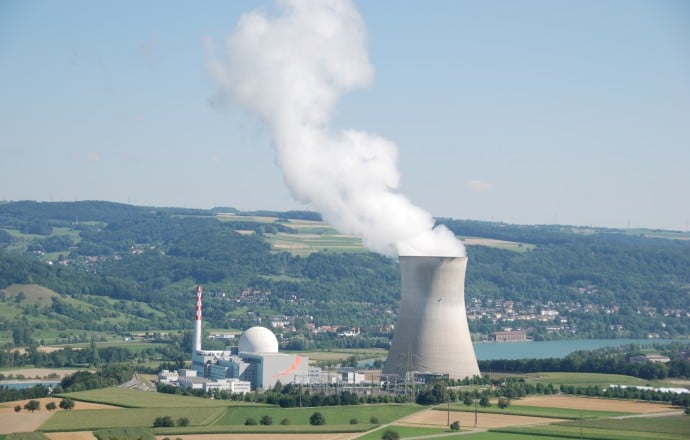Leibstadt Nuclear Power Plant

Type: Boiling water reactor BWR/6
Start of commercial operations: 1984
Nominal thermal output of reactor: 3600 MW
Gross electrical output: 1285 MWe
Net electrical output: 1233 MWe
Click here for NPP Leibstadt

Type: Boiling water reactor BWR/6
Start of commercial operations: 1984
Nominal thermal output of reactor: 3600 MW
Gross electrical output: 1285 MWe
Net electrical output: 1233 MWe
Click here for NPP Leibstadt
Both Leibstadt and Beznau nuclear power plants have shown that, in the event of or after a very severe earthquake, they can ensure that their reactors are stable and safe. Dose values of one or 100 millisievert which have to be complied with will not be exceeded even after earthquakes that are only to be expected every 1,000 or 10,000 years respectively.
For the second time since the Fukushima accident in 2011, power plant operators have demonstrated that their plants are capable of withstanding an extremely rare, severe earthquake.
A few days ago, Leibstadt Nuclear Power Plant (KKL) informed the Swiss Federal Nuclear Safety Inspectorate (ENSI) that some fuel elements do not fulfil the requirements of the applicable specifications. Accordingly, KKL decided to replace them for safety reasons. The safety of man and the environment was ensured at all times.
ENSI has issued Leibstadt NPP approval to restart subject to conditions. In an interview Ralph Schulz, Director of the Safety Analyses Division, shares some background insights.
Leibstadt NPP can restart power operation after an extended annual overhaul. The Swiss Federal Nuclear Safety Inspectorate has checked the clarification of the causes and measures derived from it for the avoidance of critical boiling conditions or dryouts. Safe operation without risk to humankind or the environment is ensured.
An inspection of fuel elements in Leibstadt NPP revealed that critical boiling states – so-called dryouts – had systematically occurred over several cycles.
Heat is generated in the reactor as a result of nuclear fission. To guarantee optimum cooling of the fuel rods, their cladding tubes must always be covered with a film of water. If they are not completely covered with water in specific areas, this is referred to as “dryout”.